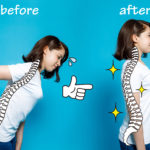Health Blog
If you have a painful condition, physical therapy is your best option

Have you dealt with any pain recently—or perhaps right now—that prevents you from moving or completing certain tasks normally? If so, it’s probably due to some type of musculoskeletal disorder. This term is used to describe a wide array of conditions that are frequently responsible for causing all sorts of disabilities, but there is one common thread between all of them: they can be effectively treated by physical therapy.
A musculoskeletal disorder is an injury or condition that involves the musculoskeletal system—which includes the bones, muscles, joints, ligaments and tendons. These disorders are extremely common, as about 30% of Americans are currently dealing with one at any point in time.
Musculoskeletal disorders can develop anywhere in the body, but there are certain conditions that occur much more frequently than others. Back pain, especially low back pain, is by far the most common of all musculoskeletal disorders. It is the leading cause of disability in the U.S. for those under the age of 45, and more than 26 million Americans between 20-64 experience frequent back pain. Severe headaches and neck pain rank just behind back pain and often lead to bothersome symptoms that interfere with daily life. Other common musculoskeletal disorders include osteoarthritis, tendinitis, and stress fractures, as well as a variety of issues related to other parts of the body. Below is a sample of some of these conditions in commonly injured joints:
- Knee: runner’s knee, jumper’s knee, iliotibial band syndrome
- Shoulder: frozen shoulder, rotator cuff tears, shoulder impingement
- Wrist: sprains, carpal tunnel syndrome
- Ankle/foot: ankle sprain, Achilles tendinitis, plantar fasciitis
- Elbow: tennis elbow, golfer’s elbow
Individuals dealing with a musculoskeletal disorder have many options when it comes to deciding how to address it. Some will do nothing and hope that pain will go away on its own, while others may see their doctor, who might prescribe medications like opioids, additional tests, or in severe cases, surgery. Another option is physical therapy, which gets to the root of the problem and addresses it with a series of carefully designed exercises and treatments that are individually tailored to each patient. Treatment therefore varies from one patient to the next, but typically consists of the following:
- Evaluation: required to determine the source of the pain and to identify which of musculoskeletal disorder is present
- Strengthening exercises: essential for areas that have become weak
- Stretching exercises: targets regions that have lost flexibility
- Manual therapy: mobilizations and manipulations to the soft tissue of injured areas to reduce pain and improve function
- Posture training: may be needed if posture is a factor
- Lifestyle modifications: habits and other lifestyle choices that may be contributing to the injury are identified and suggestions are provided on how to modify them
So if a musculoskeletal disorder is holding you back from enjoying your life, it’s important to realize that you have a number of options, but physical therapy will nearly always be your best path forward to less pain and better functioning.
March 12, 2019
Back to Health BlogHEALTH BLOG
- A Personalized Physical Therapy Program Can Assist with Whiplash
- Why Older Adults Should Incorporate an Exercise Program
- After an Achilles Injury, Physical Therapists Can Help with Recovery
- AI Can Answer Questions But It’s Best to See a Physical Therapist
- Physical Therapy Can Help With Symptoms of Wryneck
- Reduce the Risk of Pickleball Fractures By Taking Proper Precautions
- Physical Activity May Slow the Progression of Parkinson's Disease
- Too Much Salt in Your Diet? Learn the Dangers of High Sodium Intake
- Suffer From Lower Back Pain? Might Be Time to Take A Break
- The Road to Recovery: Preventing Re-Injury After ACL Surgery
RECENT ARTICLES

- 11 Possible Reasons Your Back HurtsJune 22, 2020

- What Conditions Can a Chiropractor Treat?May 25, 2020

- A Simple Guide to Better PostureApril 30, 2020

- Is Acupuncture Right for Me When I’m Afraid of Needles?March 30, 2020

- Stretching Done Right — How and When to StretchFebruary 26, 2020

